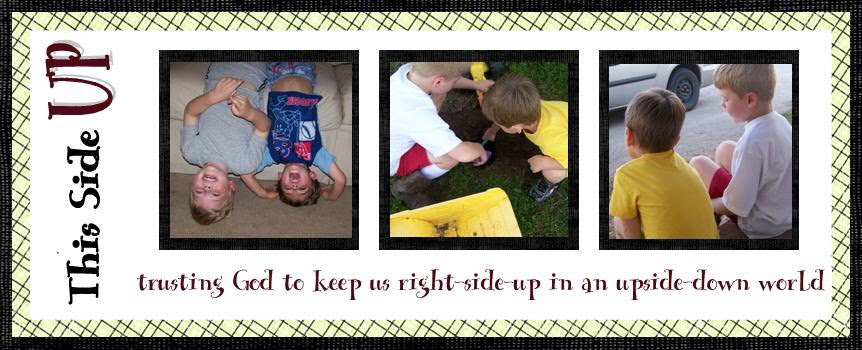The main spine we're using for our plant study is What Is a Plant? by Bobbie Kalman.
It's pretty thorough, but it's not over their heads. Here's the basic rundown of the lessons:
1: What is a plant?
2: Parts of a plant
3: Roots
4: Stems
5.1: Leaves (overview)
5.2: Leaves--photosynthesis (more than one day)
6: Other ways of getting food (carnivorous plants)
7.1: Flowers (overview)
7.2: Parts of a flower
7.3: Pollination/fruit/seeds (more than one day)
8.1 Uses/functions of plants: supply oxygen
8.2 Uses/functions of plants: food
8.3 Uses/functions of plants: clothing, shelter, other products
9: Conclusion/wrap-up
So far, we've done lessons 1 and 2.
Lesson 1: What is a plant?
We discussed what they already knew about plants, what plants do, and named some plants. Then we read p. 6-9 in What is a Plant? ("What are plants?" and "Not a Plant""). Connor copied the definition of a plant that we're using (and memorizing) for his notebook: "A plant is a living thing that is green, has more than one cell, and can make its own food."
I made a cut-and-paste sorting activity, "Plant/Not a Plant." They had to cut out each picture and glue it under the correct heading.
Lesson 2: Parts of a plant
We discussed what they already knew about the parts of a plant, and between them they came up with all of the major parts (root, stem, leaf, flower) that we're learning about. Then we read p. 10 in What Is a Plant?, which gives an overview of roots, stems, and leaves. We made models of flowers (inspired by this project at Homeschool Creations), and because we had examined some honeysuckle blossoms over the weekend during a letterboxing expedition, they insisted on adding a pistil and stamens to their models. *grin* Connor also created bugs and worms to put on his flower.
 |
| Tying on roots |
 |
| Adding leaves |
 |
| Finished products! |
Our other hands-on activity for this lesson was examining a real plant to see the parts. I picked up some cheap petunias and we pulled one of them out of the soil and checked it out:
It took a little work to get the roots (mostly) free from the dirt! We looked at and felt each part of the plant, reviewing what we'd just read about each part's function. I put the plant on some white paper and took pictures to make a notebook page:
 |
| (I cropped it for the notebook page) |
 |
| Connor's completed notebook page |
We opened up one of the flowers and looked at the pistil and stamens up close (and felt the stigma at the end of the pistil to discover that it was sticky so the pollen would stick to it). I hadn't planned to do that yet, but they really wanted to after checking out the honeysuckle the other day.
We'll be adding this to our memory work:
- Plants have roots, stems, and leaves. Many plants also have flowers.
- Roots grow down to anchor plants in the ground and take in water and nutrients.
- Stems grow up, hold the plant up, and transport water and food between parts of the plant.
- Leaves absorb sunlight and make food for the plant.
- Flowers produce seeds to make new plants.
We've also been collecting different leaves, seeds, and other plant specimens to bring home, examine, compare, and do leaf rubbings. Brennan is an especially avid collector! I'm working on an idea for displaying our finds and trying to decide if I want to mess with pressing the leaves. We're having lots of fun so far!
Oh--and we also planted seeds in our garden (more about that in another post) and we're now seeing the first sprouts!




















No comments:
Post a Comment